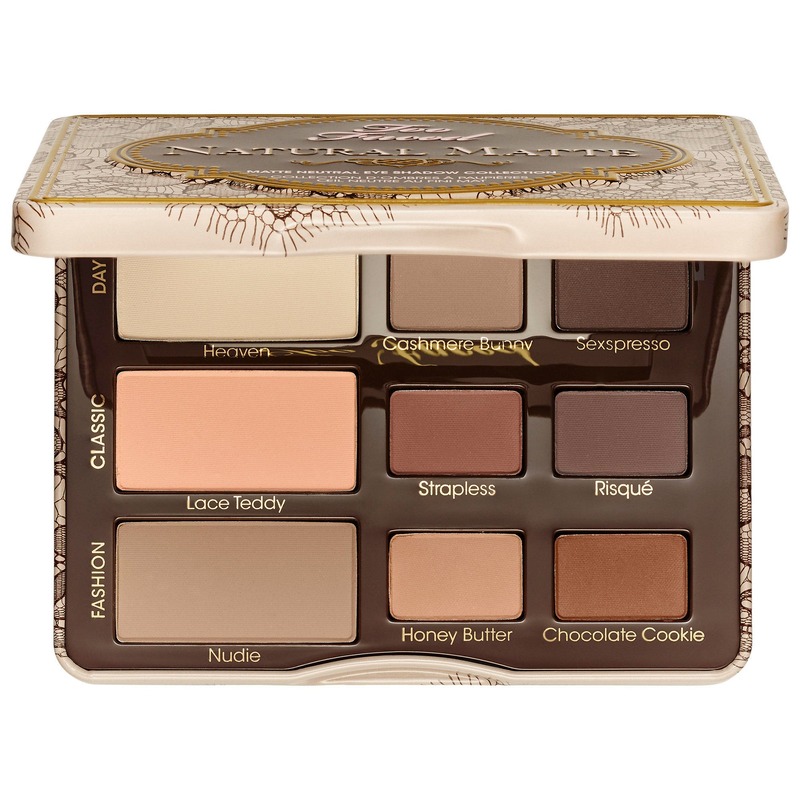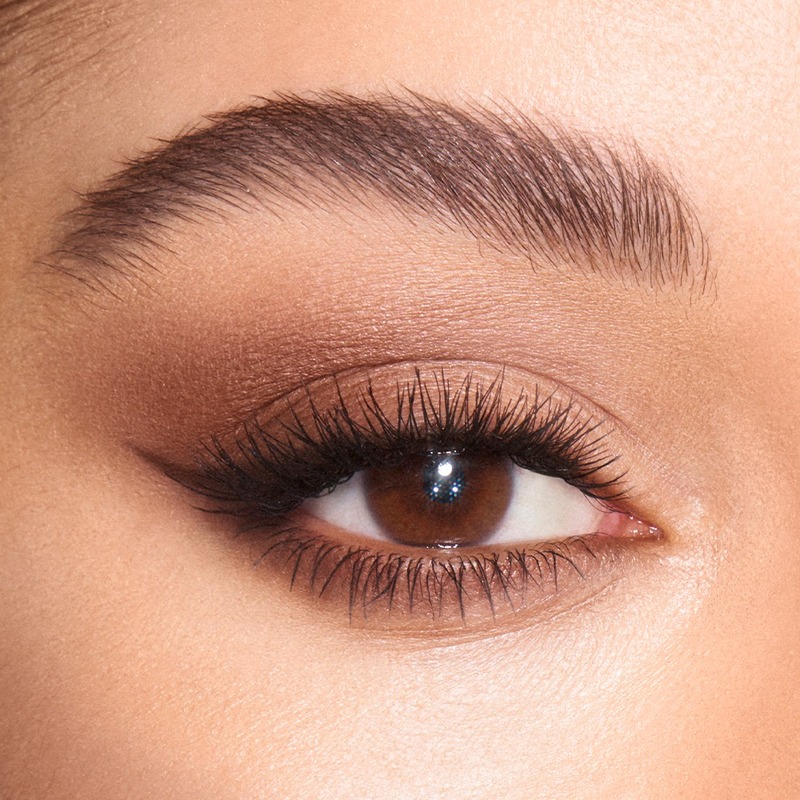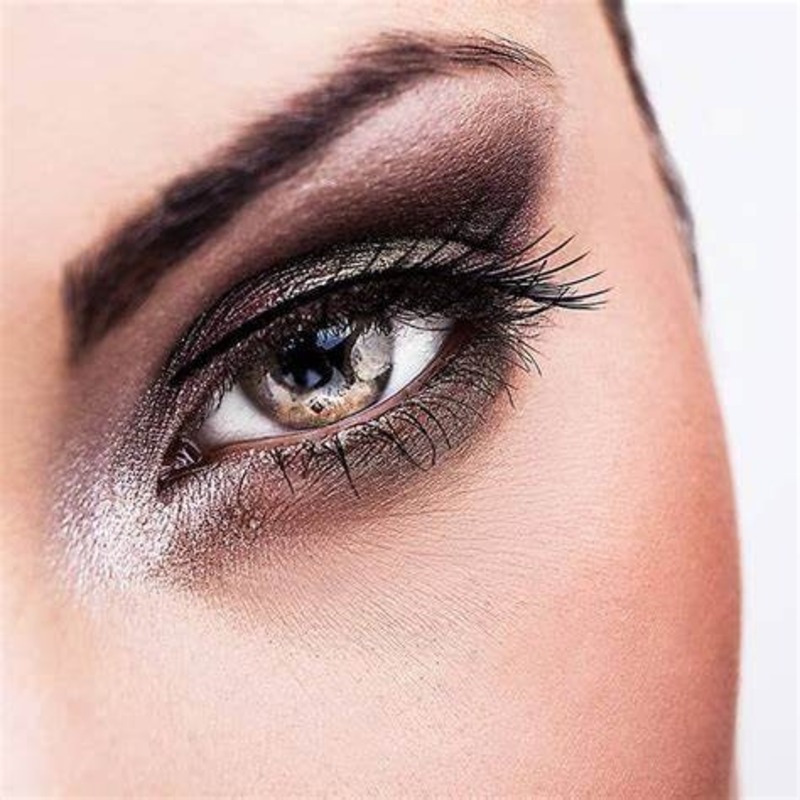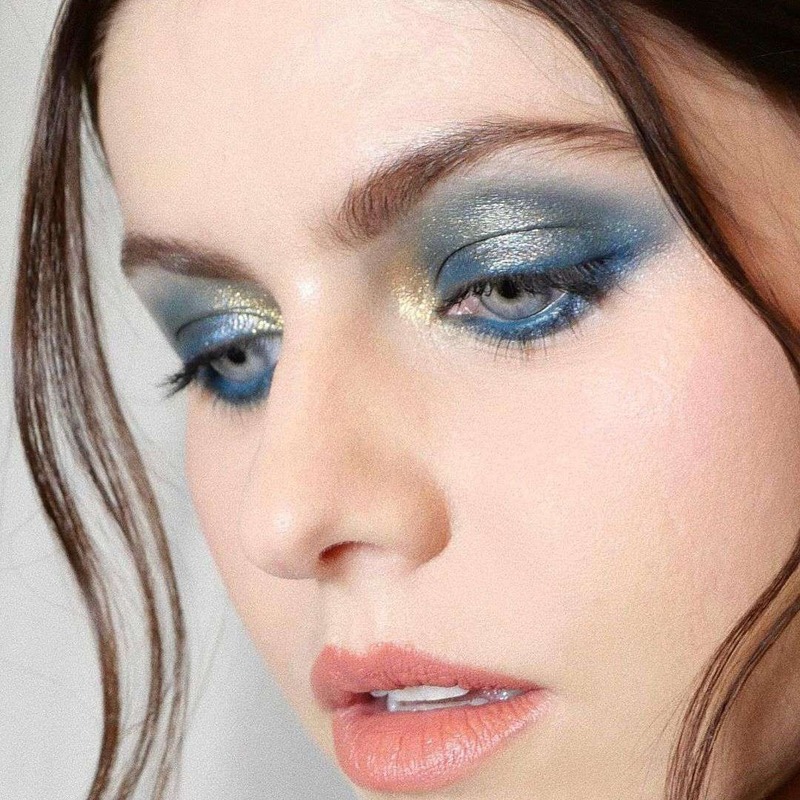Essential Tools for Eyeshadow Application
Achieving the perfect eyeshadow look starts with the right tools. Here’s what you’ll need:
- Eyeshadow Primer: This is a must-have for long-lasting wear. It helps to create a smooth canvas.
- Eyeshadow Brushes: Invest in a set of quality brushes. You’ll need a flat brush for application, a fluffy brush for blending, and a fine brush for detailed work.
- Eyeshadow Palette: Choose a palette with a range of colors. It should include both matte and shimmer shades for versatility.
- Mirror: A good-sized mirror with ample light is important. This makes sure you can see what you’re doing clearly.
- Makeup Remover: Keep makeup remover nearby. It helps to clean any mistakes without starting over.
- Blending Sponge or Brush: A blending tool is essential for diffusing harsh lines and edges.
When gathering your tools, quality is key. Opt for items that will help not hinder your eyeshadow application. With these essentials, you’re well on your way to mastering how to put on eyeshadow.
Step-by-Step Guide to Applying Eyeshadow
Applying eyeshadow can seem daunting, but with a step-by-step guide, you’ll master the process in no time. Here’s how to put on eyeshadow effortlessly:
- Start with Primer: Apply your eyeshadow primer over the entire eyelid. This step ensures a smooth surface and helps the color last longer.
- Apply Base Color: Choose a light shade from your eyeshadow palette and sweep it across the eyelid with a flat brush. This serves as the base.
- Define the Crease: Using a slightly darker shade, apply it to the crease with a fluffy brush. Make sure to blend well to avoid harsh lines.
- Highlight the Brow Bone: Take a very light, shimmering shade and lightly dab it just beneath the brow bone. This brings light to the area and accentuates your brow shape.
- Add Depth With a Darker Shade: If you desire more drama, apply a darker color to the outer corner of the eye. Blend it out well with a blending brush or sponge.
- Blend, Blend, Blend: Blending is key. Use your blending brush to smooth out any sharp edges or lines, creating a seamless transition between shades.
- Line Your Eyes: With a fine brush, apply a darker shade along the lash line. This defines the eyes and adds depth.
- Finish with Mascara: A layer of mascara will complete your eyeshadow look, opening up the eyes and adding definition.
By following these simple steps, you’ll achieve a flawless eyeshadow application. Remember, practice makes perfect and experimenting with different colors can be fun and rewarding.

Tips for Choosing the Right Eyeshadow Colors
Choosing the right eyeshadow colors can enhance your natural beauty and complement your eye color. Keep these tips in mind when selecting shades:
- Consider Your Eye Color: Certain shades can make your eyes stand out. For blue eyes, try warm tones like copper or bronze. Green eyes shine with purples and pinks. Brown eyes are versatile and look great with most colors, including green, gold, and blue hues.
- Think About Your Skin Tone: Your skin’s undertone is key. Warm undertones look best with warm colors like gold and peach. Cool undertones suit silver and blues. Neutral-toned individuals can experiment with a wide range of colors.
- Daytime vs. Nighttime: Choose lighter, softer shades for the daytime. Save darker, bolder colors for evening events.
- Experiment With Trends But Be True to Yourself: While it’s fun to try out trendy colors, stick to shades that you’re comfortable with and that enhance your personal style.
- Test Before You Invest: Always swatch eyeshadows on your skin if possible. This way, you can see how the color looks with your skin tone and eye color.
Remember, there are no strict rules in makeup. Feel free to play with colors and find what works best for you. Your confidence is the best thing you can wear with any eyeshadow color. By following these simple tips, selecting the right hues for how to put on eyeshadow becomes an easy and fun part of your beauty routine.
Blending Techniques for a Seamless Look
Blending is crucial in eyeshadow application. It creates a smooth transition between colors, making your look seem flawless. To master blending, follow these tips:
- Use the Right Brush: A fluffy blending brush is essential. It helps spread and soften eyeshadow evenly.
- Employ a Light Touch: Start with a soft touch and build up color gradually. Too much pressure can smear the eyeshadow.
- Circular Motions Work Best: Use small, circular motions to blend the eyeshadow in the crease area. This technique avoids harsh lines.
- Back-and-Forth for the Lid: On the eyelid, use a back-and-forth windscreen wiper motion. This helps blend the base color with the crease color.
- Clean Your Brush: Wipe your brush on a clean tissue between colors. This prevents muddying the shades.
- Add a Transition Color: A transition shade can help blend the lid color with the crease shade. Choose a neutral shade between the two colors.
- Practice Patience: Take your time while blending. Rushing can lead to uneven application.
Remember, blending is all about creating a seamless look. Practice these techniques to see how to put on eyeshadow with a professional touch. Keep experimenting with different brushes, pressures, and motions until you find what works best for you.

Common Eyeshadow Mistakes to Avoid
Avoiding common eyeshadow mistakes can elevate your makeup look to a professional level. Here are several critical missteps to watch out for while learning how to put on eyeshadow:
- Skipping Primer: Applying eyeshadow without primer can lead to creasing and short wear time. Always start with a primer.
- Overloading the Brush: Too much product on your brush can result in fallout on your cheeks. Lightly dip the brush and tap off excess.
- Harsh Lines: Failing to blend thoroughly can leave noticeable lines. Use circular motions to blend edges for a soft look.
- Wrong Shade Placement: Putting dark shades on the wrong part of the eye can make eyes look smaller. Keep darker colors on the outer corner.
- Ignoring Your Eye Shape: Each eye shape benefits from different application methods. Study your eye shape and adjust your technique accordingly.
- Neglecting the Brows: Not highlighting under the brow bone can make your eyes look less defined. Add a touch of highlight to the brow bone area.
- Using Only One Shade: Using a single eyeshadow color can look flat and uninteresting. Combine shades for depth and dimension.
- Forgetting to Set Your Makeup: Not setting your look can cause the eyeshadow to fade quickly. Consider using a setting spray for longevity.
By dodging these common mistakes, you can drastically improve your eyeshadow application skills. Keep practicing, and remember to have fun experimenting with different colors and techniques.
Eyeshadow Looks for Different Occasions
Matching your eyeshadow to the occasion can elevate your overall look significantly. Here’s how to tailor your eyeshadow for various events:
- Casual Outings: Go for a natural look. Use light, matte shades for a subtle effect. Think soft browns or nudes from your eyeshadow palette.
- Workplace: Keep it professional. Choose neutral colors and avoid glitter. A taupe or soft grey can define eyes without being distracting.
- Lunch Dates: Add a hint of color. Peach or soft pink can brighten your eyes. Remember to blend well for a smooth transition.
- Evening Parties: It’s time to shine. Darker shades can add drama. Use a shimmer shadow for a touch of sparkle.
- Weddings: Go for romantic hues. Rose gold or soft purple can complement a formal outfit. Add a light shimmer to the inner corners of your eyes.
- Concerts or Clubbing: Be bold. Try vibrant or deep colors like emerald or sapphire. Mix matte and shimmer for a standout look.
- Festivals: Get creative with glitter and colorful liners. Play with unexpected combinations and graphic shapes.
Remember, the key to perfecting how to put on eyeshadow for different occasions is to practice. Feel free to adapt these suggestions to suit your style and the specific event. Always start with a primer to ensure your look stays put no matter where you go.

How to Make Your Eyeshadow Last Longer
Making your eyeshadow last longer is a key goal for any makeup enthusiast. Here’s what you can do to ensure your eyeshadow maintains its vibrancy throughout the day:
- Use a Good Primer: A quality eyeshadow primer is crucial. It prevents creasing and fading.
- Powder Your Base: After applying primer, dust a light layer of powder on your lids. This sets the base.
- Layer Your Shadows: Build up eyeshadow intensity gradually. Apply in thin layers for better adhesion.
- Pick Long-Wearing Formulas: Choose eyeshadows known for their long-lasting wear. Research and read reviews to find the best ones.
- Avoid Touching Your Eyes: Keep your hands away from your eyes. Rubbing can smudge and wear off the shadow.
- Setting Spray is Your Friend: A spritz of setting spray can lock your eyeshadow in place.
By following these steps on how to put on eyeshadow, your eye makeup should stay flawless all day. Remember, it’s all about prepping and setting properly. If you invest time into these stages, your eyeshadow won’t disappoint you, no matter how long your day is.
